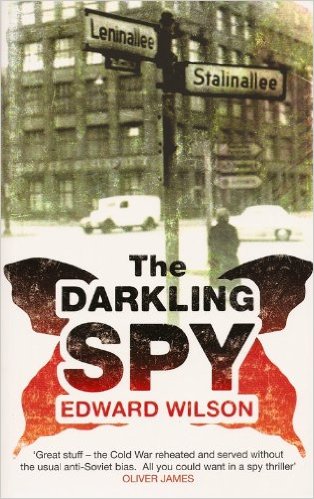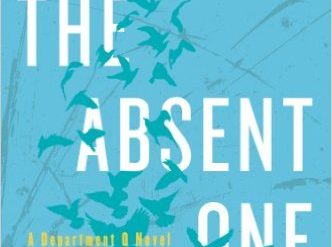
Reading The Darkling Spy by Edward Wilson is a lot like finding yourself caught in the middle of that classic old Abbott and Costello routine, “Who’s on first?” When Costello asks him for the names of the players on a baseball team,
Abbott says: . . . Who’s on first, What’s on second, I Don’t Know is on third . . .
Costello: That’s what I want to find out.
Abbott: I say Who’s on first, What’s on second, I Don’t Know’s on third.
Costello: Are you the manager?
Abbott: Yes.
Costello: You gonna be the coach too?
Abbott: Yes.
Costello: And you don’t know the fellows’ names?
Abbott: Well I should.
Costello: Well then who’s on first?
Abbott: Yes.
Costello: I mean the fellow’s name.
Abbott: Who.
Costello: The guy on first.
Abbott: Who.
Costello: The first baseman.
Abbott: Who.
Costello: The guy playing…
Abbott: Who is on first!
Costello: I’m asking YOU who’s on first.
Abbott: That’s the man’s name.
And it goes on from there. In The Darkling Spy, paranoia is endemic. Everyone suspects everyone else, nobody seems sure who’s working for whom, and the only certainty is uncertainty. If this is meant to be the theme of the novel, Wilson has richly succeeded in getting the point across. Unfortunately, it’s confusing in the extreme for anyone who tries to follow the thread of the story.
The Darkling Spy (William Catesby #2) by Edward Wilson ★★★☆☆
Cold War espionage in the shadow of two wars
The tale begins in the troubled year 1956, not long after the Korean War ended with an armistice and barely more than a decade after World War II. Two of the five members of the Cambridge Spy Ring, Donald Maclean and Guy Burgess, have recently resurfaced in Moscow, where they fled five years previously. Their colleague, Kim Philby, remains in place, though he has been named persona non grata by the U.S. and is no longer working in the British intelligence establishment. The UK, France, and Israel are soon to invade Egypt, to seize the Suez Canal from the regime of Gamal Abdel Nasser. The Hungarian people, egged on by irresponsible programming on Radio Free Europe, are about to revolt against Soviet occupation. As the story unfolds, these events recede into the past. The Hungarian uprising plays a central role in the novel.
The Darkling Spy is a sequel to Wilson’s The Envoy, the sad tale of an able young American foreign service officer turned CIA spy. In the sequel, the perspective shifts from the CIA to MI6, the UK’s counterpart, and from Kit Fournier, the American, to Will Catesby, a talented young MI6 officer. The story revolves around the tense relationship between the working-class Catesby and his aristocratic boss, Henry Bone.
Historical facts in the background
Wilson’s portrayal of intelligence field is clearly based on first-, or at least second-hand, knowledge. The picture he paints of the Hungarian uprising is based on fact as well. Historical events that include the funeral of Bertolt Brecht and prominent figures such as Markus Wolf, the long-time head of the East German intelligence service, and the high-ranking American CIA officer Bill Harvey appear in highly visible roles in the story.
About the author
Edward Wilson has written a total of six novels, five of them espionage fiction. He served as an officer in the U.S. Special Forces in Vietnam. He gave up his U.S. citizenship to become a British subject.
For more reading
You might also enjoy my posts:
- The 15 best espionage novels
- Good nonfiction books about espionage
- The best spy novelists writing today
- Top 10 mystery and thriller series
If you enjoy reading history in fictional form, check out 20 most enlightening historical novels. And if you’re looking for exciting historical novels, check out Top 10 historical mysteries and thrillers.
And you can always find my most popular reviews, and the most recent ones, on the Home Page.


























